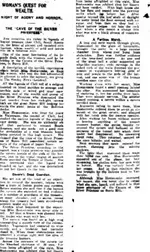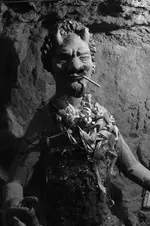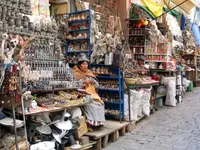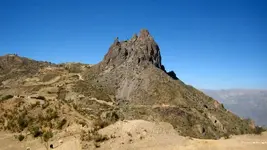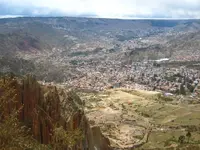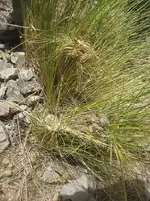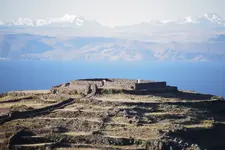Crow
Silver Member
- Joined
- Jan 28, 2005
- Messages
- 4,050
- Reaction score
- 11,264
- Golden Thread
- 0
- Location
- In a tax haven some where
- Detector(s) used
- ONES THAT GO BEEP! :-)
- Primary Interest:
- Other
- #1
Thread Owner
Hello All
Here is yarn that has been tossed about over many a drinking session. Not just in my den of iniquity but through hundreds of story tellers across the Andes. In my time working for a mining company we worked with various labourers in Peru, Ecuador, Bolivia and Chilli. Shamefully those workers was paid a hell of a lot less than us. So we tried various ways to take care our hired crew being comfortable and well supplied. And most of all we shared food and drinks with our hired hands. A lesson I had learned well in New Guinea.
In these somewhat fleeting friendships of working and for a time with these nationals one thing you will understand baring the language is the universal love of telling a story. And its in one of those moments with the respect and the right coaxing with the local beer you flesh out amazing stories of life which most of us would consider an alien world.
It is amazing a shared meal smoke or drink can do to break barriers. All of these roof of the world dwellers of the Altiplano had a story of a legend to tell. They all told their stories with a gleam in their eyes, especially if they saw you deeply interested in what they are saying. One such legend sprang up in conversation in Peru in the Atacama desert and the other in the high Altiplano of southern Bolivia in high dry salt lakes region where the frost of the dry salt lake mirrors the sky, where heaven and earth become one.
The stories all be it slightly different in description tells of a fabulous legend of a Silver adorned Goddess or Inca priestess hidden in a remote mountain cave and the old ones, the Incas used to send once a year a virgin female child as sacrifice to appease the earth Goddess along with finely wrought items of silver used to adorn each Sacrifice toPachamama. The cave was always situated at the base of a High Andean volcano in the cold desert of the Altioplano.
Even today my fine Andean friends would tip part of their food and drink in appeasement of the godless. For she was the goddess for fertility and crops as well as earthquakes when she is annoyed. She was the Earth mother the source of creation in Andean Mythology. In most country villages today before any meeting or gathering it is always etiquette to say a small prayer with a token offering of food or drink to the mother Goddess. In more important occasion a llama would be sacrificed to her.
The catholic church had to blend her into the virgin Mary, however the her toast is called challa and it is made almost every day. Pachamama has a special worship day called Martes de challa (Challa's Tuesday).
People bury food, throw candies, and burn incense. In some cases, celebrants assist traditional priests, known as Yatiris in Aymara, in performing ancient rites to bring good luck or the good will of the goddess, such as sacrificing guinea pigs or burning llama foetuses (although this is no longer common). But I was fortunate to have stayed in a home where they burnt one. Her festival coincides with Shrove Tuesday also celebrated as Carnevale or Mardi Gras.
Many tried to find this sacred site of legend but the description was so vague it could be a cave on any number of Andean volcanoes? Her festival is conducted on many mountains today but as legend stated about the Inca one sacred mountain was used for the Virgins of Pachamama
The story intrigues me so was there any truth to this wild and woolly folk tales?
Crow
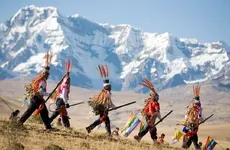
Here is yarn that has been tossed about over many a drinking session. Not just in my den of iniquity but through hundreds of story tellers across the Andes. In my time working for a mining company we worked with various labourers in Peru, Ecuador, Bolivia and Chilli. Shamefully those workers was paid a hell of a lot less than us. So we tried various ways to take care our hired crew being comfortable and well supplied. And most of all we shared food and drinks with our hired hands. A lesson I had learned well in New Guinea.
In these somewhat fleeting friendships of working and for a time with these nationals one thing you will understand baring the language is the universal love of telling a story. And its in one of those moments with the respect and the right coaxing with the local beer you flesh out amazing stories of life which most of us would consider an alien world.
It is amazing a shared meal smoke or drink can do to break barriers. All of these roof of the world dwellers of the Altiplano had a story of a legend to tell. They all told their stories with a gleam in their eyes, especially if they saw you deeply interested in what they are saying. One such legend sprang up in conversation in Peru in the Atacama desert and the other in the high Altiplano of southern Bolivia in high dry salt lakes region where the frost of the dry salt lake mirrors the sky, where heaven and earth become one.
The stories all be it slightly different in description tells of a fabulous legend of a Silver adorned Goddess or Inca priestess hidden in a remote mountain cave and the old ones, the Incas used to send once a year a virgin female child as sacrifice to appease the earth Goddess along with finely wrought items of silver used to adorn each Sacrifice toPachamama. The cave was always situated at the base of a High Andean volcano in the cold desert of the Altioplano.
Even today my fine Andean friends would tip part of their food and drink in appeasement of the godless. For she was the goddess for fertility and crops as well as earthquakes when she is annoyed. She was the Earth mother the source of creation in Andean Mythology. In most country villages today before any meeting or gathering it is always etiquette to say a small prayer with a token offering of food or drink to the mother Goddess. In more important occasion a llama would be sacrificed to her.
The catholic church had to blend her into the virgin Mary, however the her toast is called challa and it is made almost every day. Pachamama has a special worship day called Martes de challa (Challa's Tuesday).
People bury food, throw candies, and burn incense. In some cases, celebrants assist traditional priests, known as Yatiris in Aymara, in performing ancient rites to bring good luck or the good will of the goddess, such as sacrificing guinea pigs or burning llama foetuses (although this is no longer common). But I was fortunate to have stayed in a home where they burnt one. Her festival coincides with Shrove Tuesday also celebrated as Carnevale or Mardi Gras.
Many tried to find this sacred site of legend but the description was so vague it could be a cave on any number of Andean volcanoes? Her festival is conducted on many mountains today but as legend stated about the Inca one sacred mountain was used for the Virgins of Pachamama
The story intrigues me so was there any truth to this wild and woolly folk tales?
Crow





